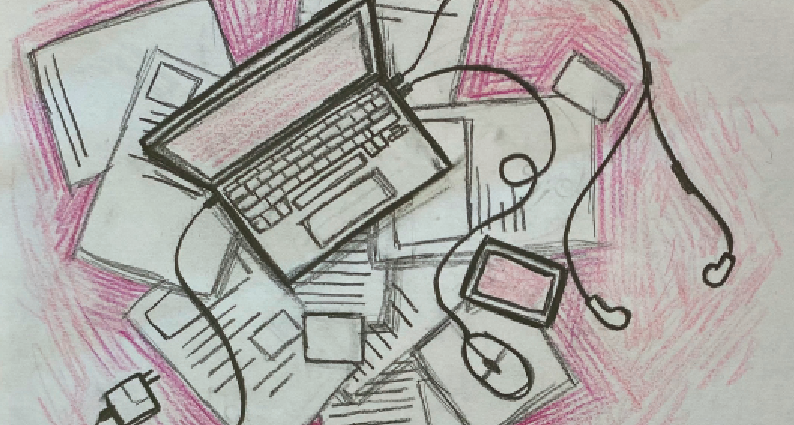Staff Editorial
Digital, traditional learning methods must be balanced
New or old, efficient or effective, computerized or handwritten, learning methods all hold their own benefits and flaws. Each student and teacher work differently, making it a nearly impossible task to pursue one sole form of schooling. Thus, intermixing both digital and traditional styles of education gives students more opportunity for success than investing entirely into one avenue.
Computerized learning, a phenomenon that rose significantly in popularity after the pandemic forced its implementation, is a practice both loved and hated. On the positive side, digital systems are excellent for organization and avoid the hassles of printing, filing, and losing various papers.
They allow for easier communication between teachers and students, and they also tend to expedite the entire learning, testing and grading process.
Unfortunately, online education is not all sunshine and rainbows. A 2021 study by Jama Pediatrics found that teenagers, on average, spend almost eight hours a day on screens. This time doesn’t account for digital learning.
Putting more assignments on computers only adds to this concerning statistic, potentially jeopardizing the mental and physical health of students and staff alike. Additionally, learning online opens the door to distractions like Netflix or Amazon shopping that simply don’t exist on paper.
Digital education, as can be seen in this brief reflection, has its merits and faults. To provide students with the best possible learning experience, schools must utilize the computer where it helps and abandon it where it hurts.
To fully understand the debate surrounding the application of these methods, one must also establish the general aims of education. School does not exist exclusively for career preparation, and by the same logic, it does not exist only for students to learn content.
Graduates of Blue Valley, and all other schools for that matter, will be expected to utilize both curriculum knowledge and workplace skills to succeed in the real world. When it comes to absorbing content, traditional, tactile methods emerge victoriously.
According to a recent study by Princeton and UCLA researchers, there are clear connections between writing notes by hand and committing them to memory. By this measure, “paper” learning projects like poster boards seem to be the more beneficial option.
However, business executives or medical professionals seldom present their proposals on a tri-fold. Digital applications, such as Google Slides, are much more commonly used in academic settings outside of high school and should therefore be likewise emphasized.
Through this singular example, one can see the need for both digital and traditional learning. Without the complements of both, aspects of a well-rounded education are lost.
All things considered, pencils and keyboards each have a rightful place in academics. Remove one, and you risk an entire facet of the educational experience.
In mixing these learning mediums, students and teachers alike can reap the benefits of a both efficient and effective style of schooling.

Charley Thomas is a senior and serves as Editor-in-Chief of the Tiger Print this year. At BV, she is a member of the Varsity Volleyball Team, Student Council,...




